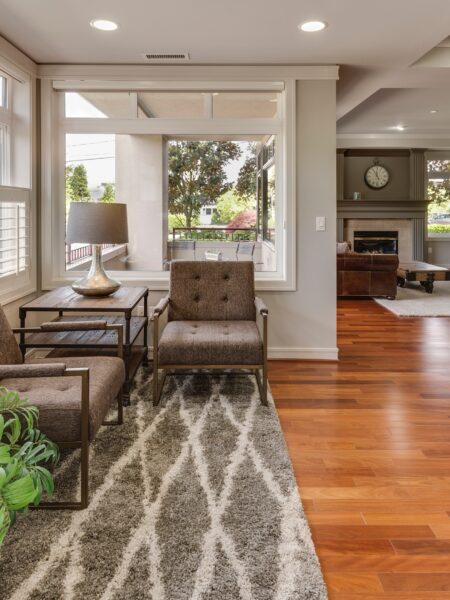Floors in Florida homes take a lot of action. Kids running through after swim days, pets tracking in sand from the yard, and guests dropping by for weekend visits. Over time, even the toughest surfaces can start to show wear. The good news? A few small habits can make a huge difference in keeping your floors looking great for years to come.
At Laminate Flooring and More in Orange City, FL, we’ve seen it all, from floors that stay beautiful for decades to those that wear down too quickly. Whether your home has hardwood, tile, laminate, or vinyl, these simple habits can protect your investment and help your floors handle everyday life with ease.
Use Furniture Pads the Right Way
One of the fastest ways floors get scratched is from heavy furniture being moved across them. Furniture pads are an easy, inexpensive fix, but not all are created equal. Felt pads work best for hardwood and laminate because they glide smoothly across the surface without catching grit. Rubber or silicone pads are great for tile or vinyl, where sliding is less of a concern.
Check your pads regularly. Dust, pet hair, and grit can collect under them, creating fine scratches every time the furniture moves. Clean or replace them every few months to keep them working properly.
Add Area Rugs and Runners in Busy Spots
If your home has kids, pets, or a lot of foot traffic, strategic rug placement can protect your floors while adding comfort and style. Focus on entryways, hallways, and dining areas where chairs move frequently. Choose rugs with non-slip backing that won’t discolor the floor beneath.
For dining spaces, make sure rugs extend at least 24 inches beyond the table to cover chair movement. In high-traffic zones, runners can help distribute wear evenly while reducing dirt and moisture tracked in from outside.
Create a Simple Cleaning Routine
A consistent cleaning routine makes all the difference. Dust and grit act like sandpaper underfoot, wearing away at finishes. Dry sweeping or vacuuming a few times a week keeps debris under control.
When it’s time for a deeper clean, stick with neutral pH cleaners made for your specific flooring type. Harsh chemicals and steam mops can damage finishes or loosen adhesives. For hardwood and laminate floors, use a damp—not wet—microfiber mop for a gentle clean.
Keep Shoes and Pet Nails in Check
Shoes, especially high heels, are one of the biggest culprits behind scratches and scuffs. Set up a simple “no-shoes” policy inside your home, or at least keep entry mats nearby so guests can wipe their feet before coming in.
Pet nails can also mark up flooring quickly. Regular trimming helps, but if your dog or cat still leaves light scratches, consider a satin or matte finish on your next floor—these finishes tend to hide minor marks better than glossy ones.
Be Ready for Spills
Florida homes see plenty of water, between afternoon rainstorms and poolside living, spills happen. The key is reacting quickly. Wipe up liquids as soon as they hit the floor to prevent staining, swelling, or warping. Keep microfiber cloths handy in high-traffic rooms like the kitchen or living area for easy cleanup.
Protect Entryways with a “System”
Your front and back doors are the first line of defense against dirt, sand, and moisture. Create a simple entryway system: an outdoor mat for brushing off shoes, an indoor mat to catch remaining dirt, and a small boot tray or basket for shoes. For households near the coast or lakes, this one habit can drastically reduce the grit that scratches floors.
Small Efforts, Big Results
Protecting your floors isn’t about major maintenance—it’s about consistency. A few mindful habits can preserve their beauty, reduce wear, and extend their lifespan for decades.
At Laminate Flooring and More, we’re proud to help Orange City homeowners find flooring that not only fits their style but also stands up to everyday life. From hardwood and laminate to vinyl and tile, we offer products that are as practical as they are beautiful.
Ready to explore new flooring options or get expert advice on care and maintenance? Contact us today to request an estimate and learn how we can help keep your floors looking their best year after year.






